9 Rare Amphibious Vehicles You Won’t Believe Exist
Amphibious vehicles have fascinated enthusiasts for years, offering the thrill of both land and water travel. Some of these rare vehicles go beyond the ordinary, combining function with cutting-edge design. The idea of crossing different terrains is more than just a dream for those behind these creations. From innovative military technology to stunning concept cars, there is more to these vehicles than meets the eye.
This post may contain affiliate links, which helps keep this content free. Please read our disclosure for more info.
Gibbs Aquada
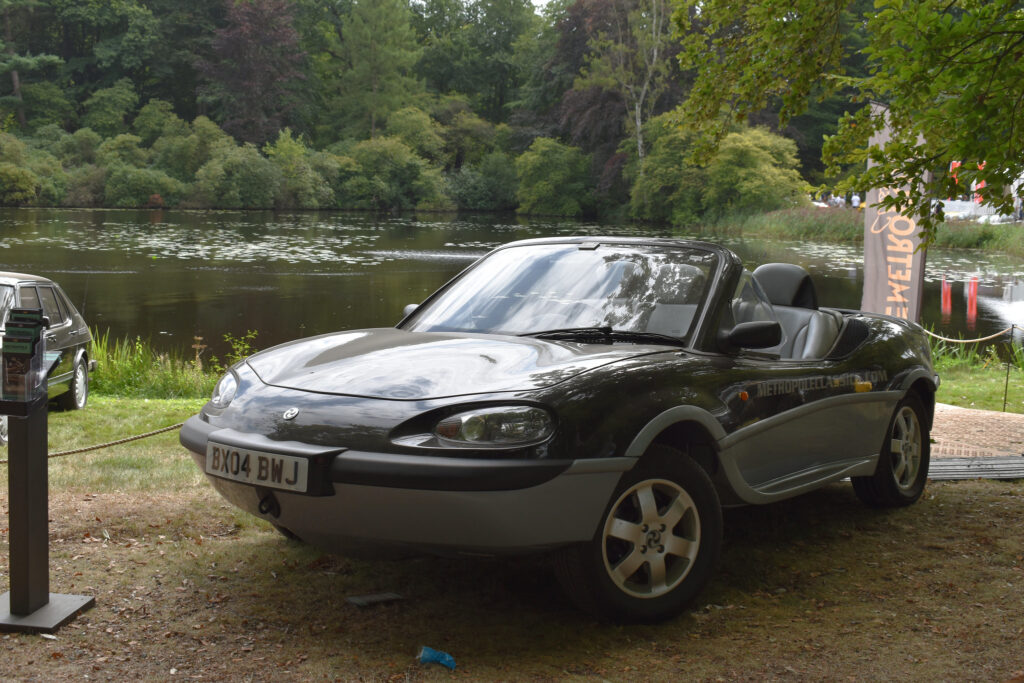
The Gibbs Aquada is a sleek amphibious sports car that blends speed with versatility. Designed for both land and water, it can reach up to 100 mph on the road and 30 mph on the water. This vehicle is powered by a V6 engine, and its transformation from car to boat is incredibly smooth, taking just a few seconds. It is an exclusive model, making it highly sought after by collectors and enthusiasts alike.
With a limited production run, the Aquada is a rare sight on the streets and even rarer on the water. The vehicle’s cutting-edge design and engineering make it a standout in the amphibious vehicle market. Its price point also reflects its rarity, often reaching six figures. The Gibbs Aquada is an example of how amphibious vehicles are not just functional but also stylish and high-performance.
Amphicar Model 770
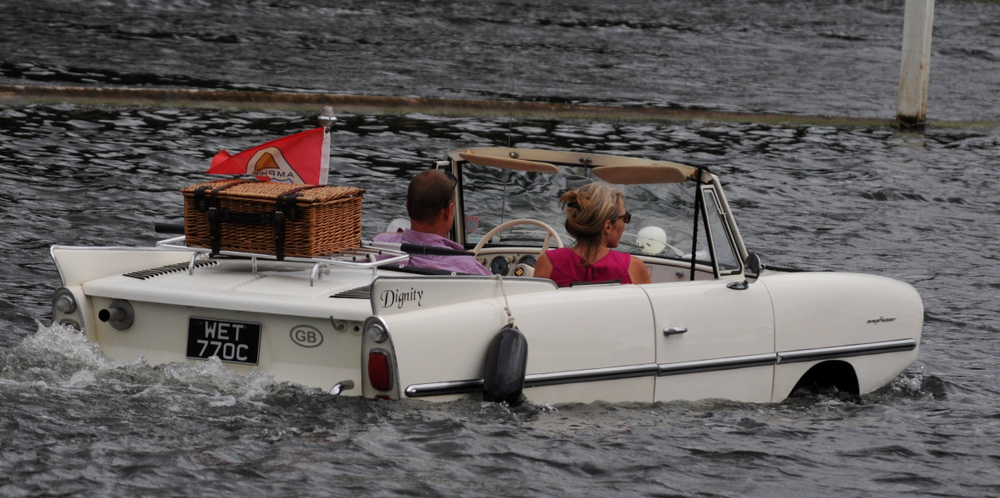
Produced from 1961 to 1968, the Amphicar Model 770 is one of the most famous amphibious vehicles in history. Known for its unique ability to function both as a car and a boat, it could reach speeds of 70 mph on land and 7 mph on water. The Model 770’s design is unmistakable, featuring a compact, retro style that appeals to classic car collectors.
Though only about 3,878 units were made, the Amphicar Model 770 remains a symbol of amphibious engineering. Its rarity is heightened by its age and the fact that many have been lost to time or overuse. Even today, finding one in good condition is a challenge, making it a prized possession for collectors. The Amphicar is as much a piece of automotive history as it is a functional vehicle.
Watercar Panther

The Watercar Panther is a high-performance amphibious vehicle that offers both speed and luxury. On land, it can reach up to 80 mph, and on water, it can cruise at 45 mph. This vehicle is designed with a custom-built chassis and a powerful V8 engine, ensuring both land and water performance are top-notch.
What makes the Watercar Panther rare is its engineering and the exclusivity of the model. Only a small number of these vehicles are produced each year, making it a highly sought-after collector’s item. Its ability to perform equally well on land and water, combined with its high-end features, sets it apart from many other amphibious vehicles. For collectors and enthusiasts, the Watercar Panther is a symbol of innovation and luxury.
Schwimmwagen
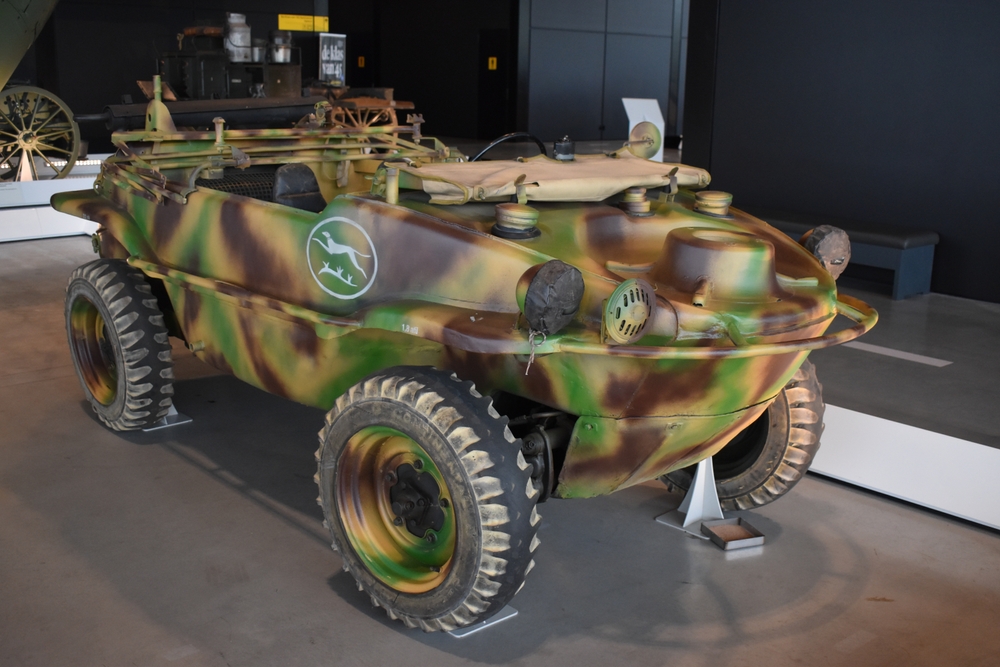
The Schwimmwagen was developed during World War II by the German military, making it an iconic amphibious vehicle with a unique history. It was designed to be used by the military for crossing bodies of water and rough terrain, with the ability to reach speeds of 40 mph on land and 5 mph on water. Its compact, utilitarian design made it highly functional in various environments.
As one of the few military vehicles that combined land and water capabilities, the Schwimmwagen is extremely rare today. Only about 14,000 units were produced, and many have been lost or damaged over the years. The surviving models are highly coveted by collectors, not just for their amphibious abilities but also for their historical significance. Owning a Schwimmwagen is like owning a piece of military history.
DUKW
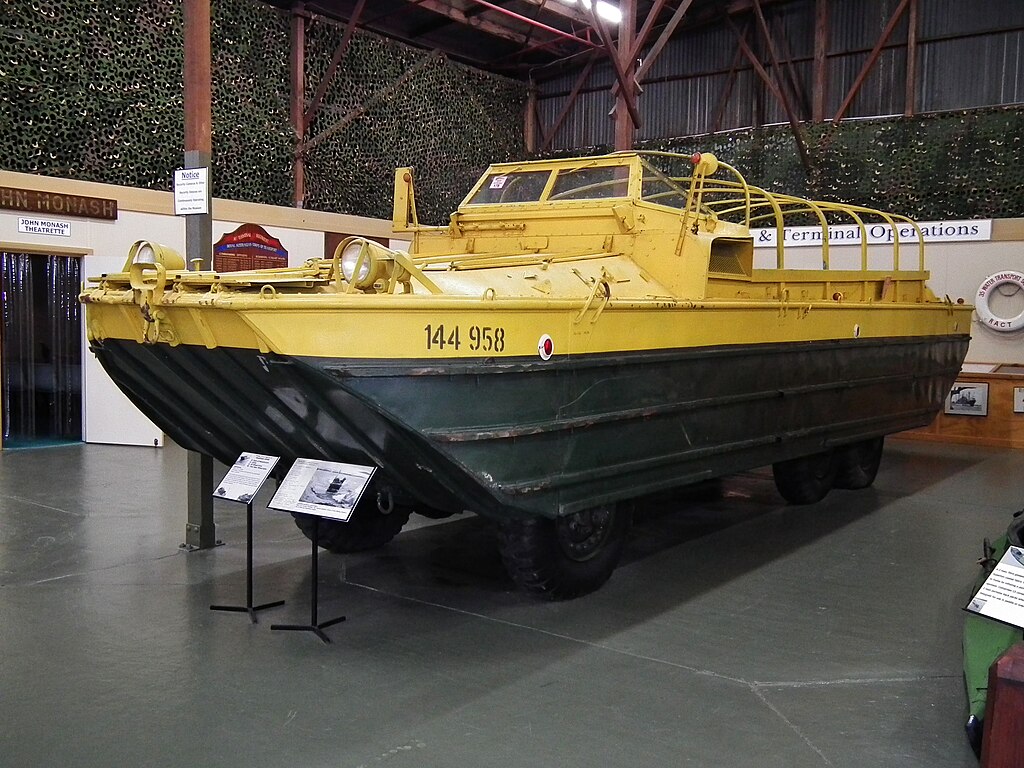
The DUKW, also known as the “Duck,” was a military amphibious vehicle used during World War II. Its primary purpose was to carry cargo and troops across land and water, making it a vital part of the military’s amphibious operations. With a top speed of 35 mph on land and 7 mph on water, the DUKW could carry heavy loads over both terrains.
What makes the DUKW rare today is its limited production and the historical context surrounding its use. Only a few hundred units survive, many of which are used for tourism or private collections. Its legacy as a workhorse of the military gives it significant value, making it a prized possession among amphibious vehicle collectors. The DUKW is a symbol of ingenuity and resilience, blending military design with amphibious functionality.
Sealegs 7.1m Amphibious Boat
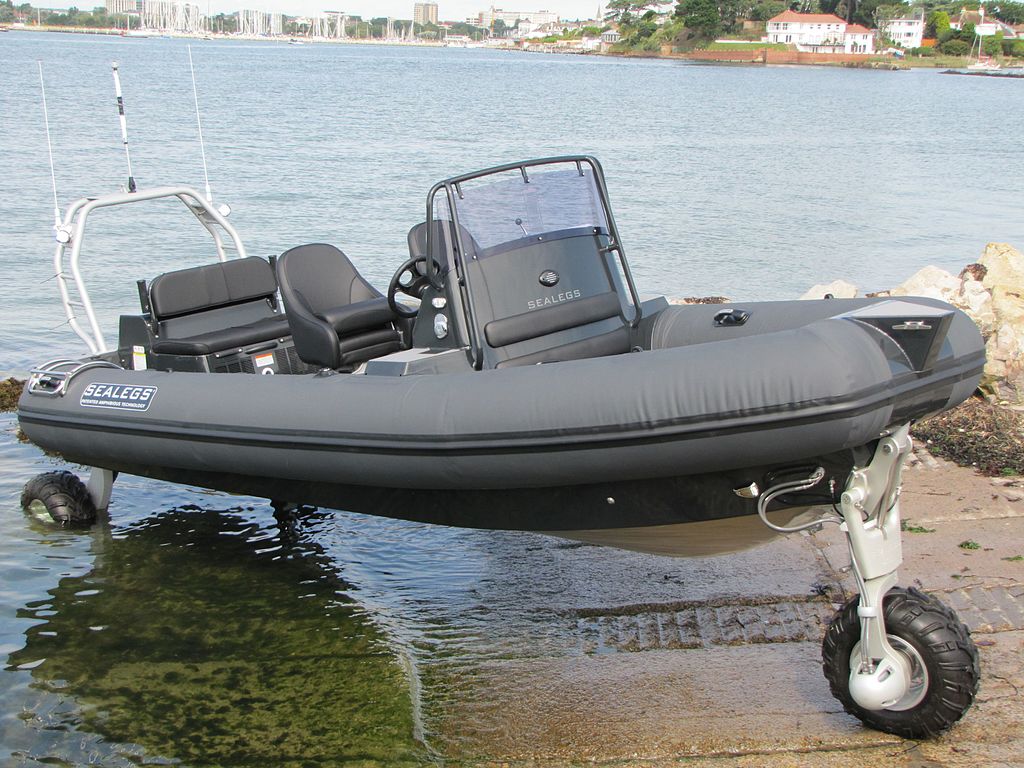
The Sealegs 7.1m Amphibious Boat is a modern take on amphibious vehicles, designed for both leisure and practical use. It features retractable wheels that allow the boat to drive on land, making it perfect for launching into the water from any shoreline. The vehicle can reach speeds of 7 mph on land and 40 mph on water, offering versatility for any adventure.
What sets the Sealegs 7.1m apart is its cutting-edge design and modern technology. The boat’s amphibious capabilities make it ideal for remote locations, allowing users to access waterways that are otherwise difficult to reach. This vehicle’s rarity lies in its specialized use, with only a limited number available for sale each year. For those looking to explore water and land with ease, the Sealegs 7.1m is the ultimate choice.
The LARC-V
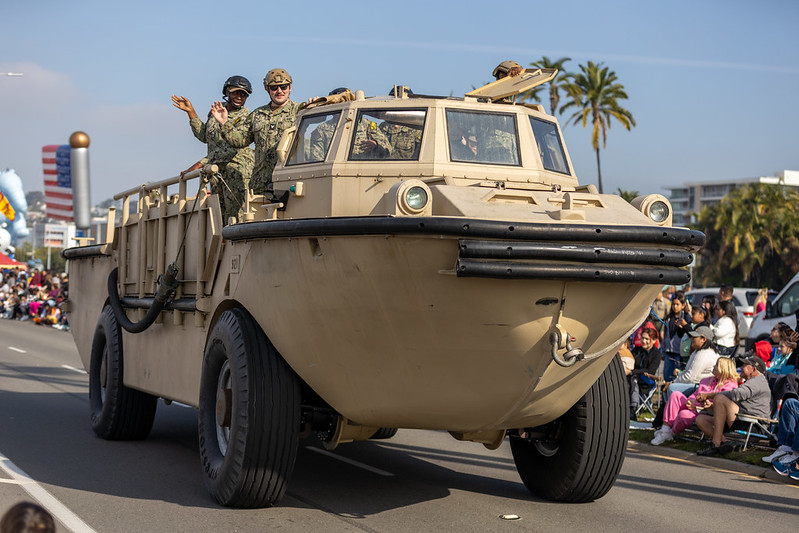
The LARC-V (Lighter, Amphibious Resupply Cargo Vehicle) is a military amphibious vehicle designed to carry large loads over both land and water. Developed in the 1960s, the LARC-V can carry up to 5 tons of cargo, making it ideal for military logistics. Its massive size and impressive capabilities make it a rare and powerful amphibious vehicle.
Despite its military origins, the LARC-V is highly coveted by collectors due to its unique size and functionality. Only a limited number were produced, and even fewer remain in good condition today. Its rarity is further emphasized by its specialized use in military operations. The LARC-V remains a symbol of utility and power in the world of amphibious vehicles.
The Hovercraft
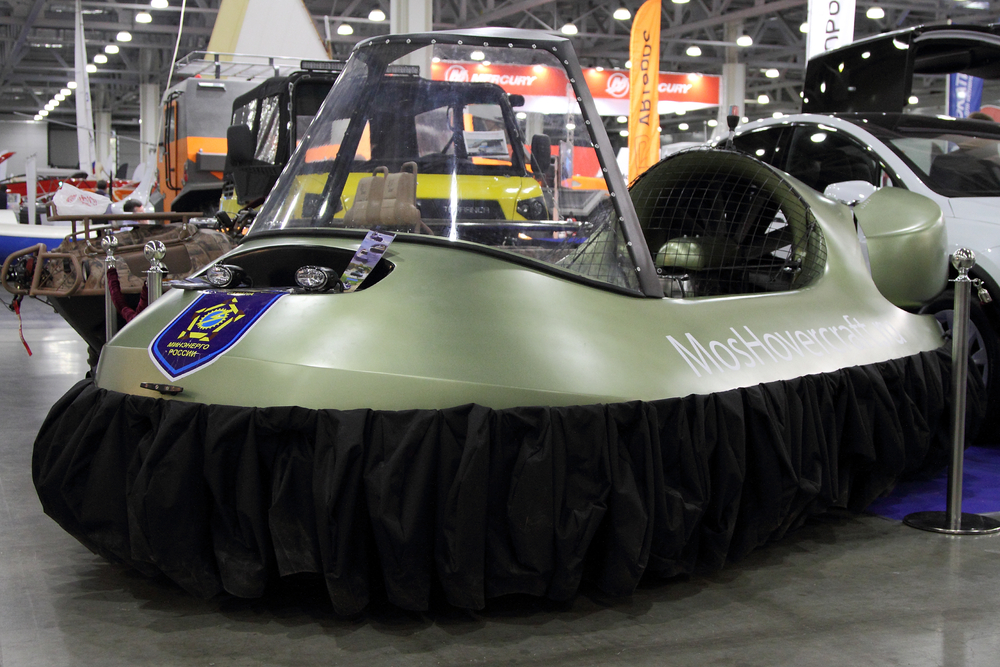
Hovercrafts are amphibious vehicles that use a cushion of air to travel over both land and water. They are capable of crossing over a variety of terrains, including marshes, rivers, and ice, making them ideal for extreme conditions. These vehicles are often used for military, rescue, or exploration purposes.
The rarity of hovercrafts lies in their specialized design and the technology used to create the air cushion. Though several types of hovercrafts exist, their use is limited due to the complexity of their design and the need for skilled operation. Their ability to cross over land and water makes them particularly useful in remote or difficult-to-reach areas. For collectors and enthusiasts, hovercrafts represent cutting-edge technology in amphibious transportation.
The Amphibious Jeep
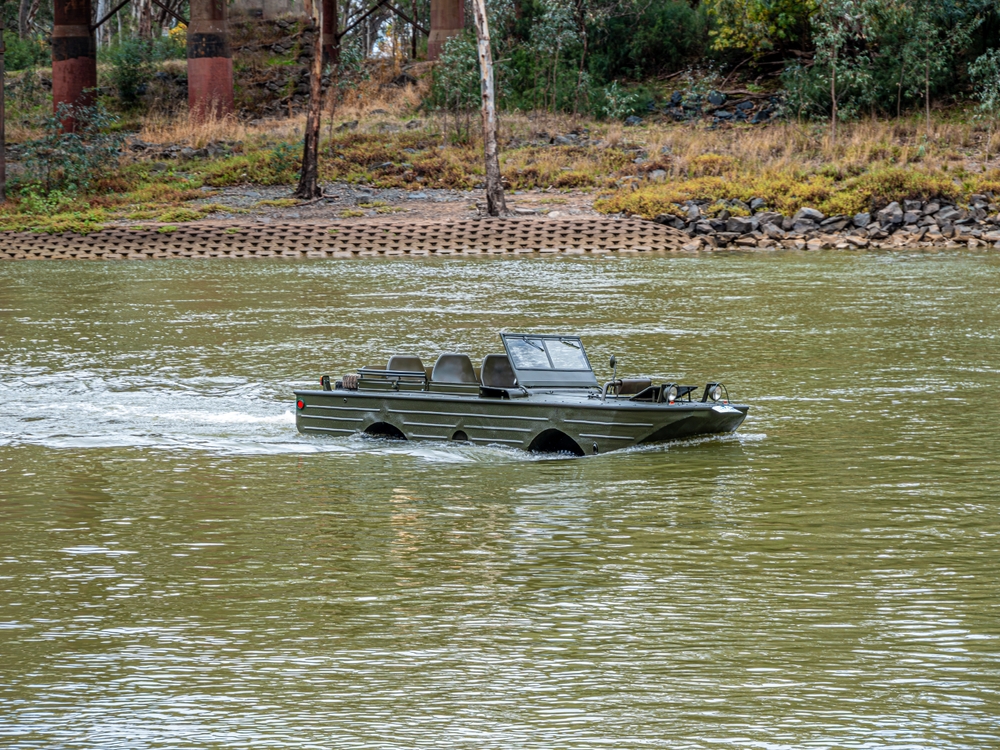
The Amphibious Jeep, also known as the Seep, was designed during World War II for military use. This vehicle can travel both on land and in water, thanks to its waterproof design and powerful engine. It could reach speeds of 40 mph on land and 5 mph in the water, making it a versatile tool for amphibious operations.
What makes the Amphibious Jeep rare is its historical significance and limited production. Only a small number were made, and many of them were used in wartime, which makes them harder to find today. Its dual capabilities and connection to military history make it a valuable collectible for car enthusiasts. The Amphibious Jeep stands as a reminder of how vehicles have evolved to meet the challenges of different environments.
This article originally appeared on Avocadu.
